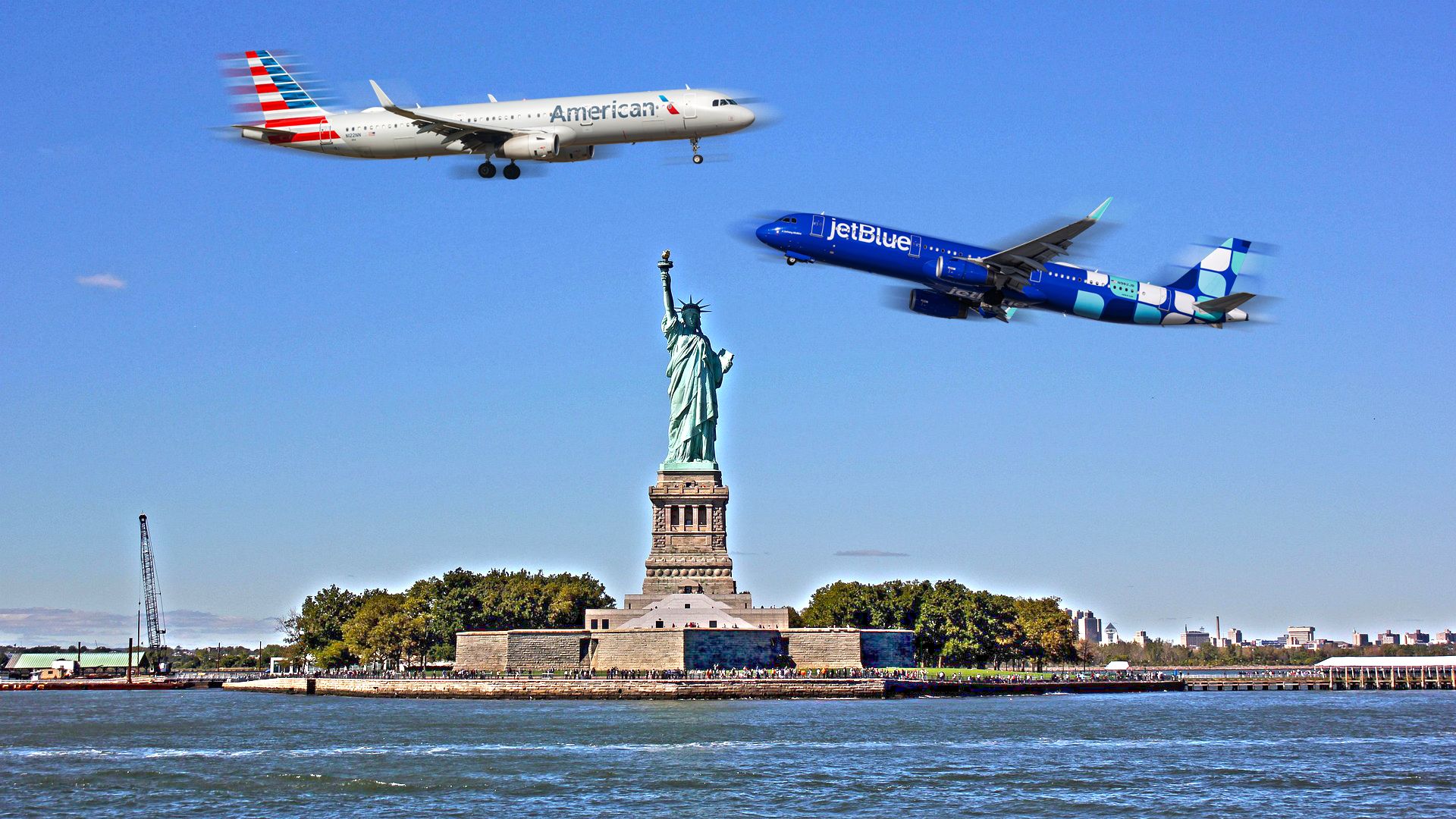The transcontinental air market in the United States is experiencing a significant resurgence, with a notable increase in travel demand as the effects of the COVID-19 pandemic wane. In October 2025, data from Cirium reveals that Alaska Airlines has emerged as the leading carrier in scheduled flights across the country, significantly outperforming its competitors. This surge in traffic highlights the critical role that coast-to-coast routes play in the U.S. aviation landscape.
Flight Data Highlights Alaska’s Dominance
According to the flight schedule data from Cirium, Alaska Airlines operated 1,470 flights in October, outpacing United Airlines, which managed 1,084 flights, and Delta Air Lines, which recorded 618 flights. This impressive volume represents a 30% increase over United’s operations and more than double the number of flights offered by Delta.
While Alaska Airlines leads in terms of flight numbers, United Airlines claims the top spot for overall seat capacity, with approximately 227,100 seats available compared to Alaska’s 206,128 seats. This illustrates how different metrics can highlight distinct strengths among airlines.
Here is a breakdown of the scheduled flight data for October 2025:
– **Alaska Airlines:** 1,470 flights, 206,128 seats
– **United Airlines:** 1,084 flights, 227,100 seats
– **Delta Air Lines:** 618 flights, 122,866 seats
– **American Airlines:** 547 flights, 114,354 seats
– **JetBlue Airways:** 434 flights, 71,948 seats
– **Frontier Airlines:** 112 flights, 36,544 seats
– **Spirit Airlines:** 90 flights, 21,742 seats
The data clearly shows that Alaska Airlines leads the charge in transcontinental travel, with United Airlines being the only legacy carrier to come close in flight numbers.
Understanding Transcontinental Flight Metrics
The term “transcontinental” refers to flights scheduled between major airport hubs located on the U.S. West and East Coasts. The data was drawn from a selection of key airports, including Los Angeles International Airport (LAX), New York-JFK, Seattle-Tacoma International Airport (SEA), and others that are crucial for air travel in the U.S.
The following airports were included in the analysis:
– **BOS:** Boston Logan International Airport
– **BUR:** Hollywood Burbank Airport
– **BWI:** Baltimore/Washington International Thurgood Marshall Airport
– **DCA:** Ronald Reagan Washington National Airport
– **EWR:** Newark Liberty International Airport
– **IAD:** Washington Dulles International Airport
– **JFK:** John F. Kennedy International Airport
– **LAX:** Los Angeles International Airport
– **MCO:** Orlando International Airport
– **MIA:** Miami International Airport
– **PDX:** Portland International Airport
– **SAN:** San Diego International Airport
– **SEA:** Seattle–Tacoma International Airport
– **SFO:** San Francisco International Airport
– **SNA:** John Wayne Airport
This selection of airports reflects the high volume of air operations, particularly from California and the Mid-Atlantic region, which are home to numerous popular transcontinental routes.
Alaska Airlines has notably streamlined its operations by focusing on a modern fleet that primarily includes the Boeing 737 Next Generation and 737 MAX aircraft. This strategy has allowed the airline to increase capacity while maintaining competitive flight frequency.
United Airlines and Delta Air Lines: Strong Contenders
While Alaska Airlines took the lead in flight count, United Airlines remains a formidable player in the market with its robust fleet of nearly 1,100 aircraft. United’s San Francisco to Newark and Los Angeles to Newark routes are among the top five busiest transcontinental routes, contributing significantly to its seat capacity advantage.
The airline’s ongoing fleet modernization, including new 737 MAX and 787 Dreamliner aircraft, supports its position as a premier airline in both domestic and international markets. Despite not having the highest number of flights, United’s operational strategy enables it to maintain a competitive edge.
Delta Air Lines, while not leading in overall flights or capacity, boasts a strong presence with its primary hub at Atlanta Hartsfield-Jackson International Airport (ATL). In October 2025, Delta’s most popular transcontinental route was from LAX to JFK, attracting significant traffic with 290 scheduled flights and over 65,000 seats available.
Emerging Players and Competitive Landscape
JetBlue Airways, although lacking the extensive scale of the top three airlines, has successfully positioned itself with the third-most-popular route from JFK to LAX, offering over 300 flights and 47,000 seats in October 2025. Its premium Mint suites have gained popularity among travelers seeking comfort on transcontinental flights.
American Airlines, with a fleet size surpassing Delta’s, also figures prominently in the transcontinental market, particularly with its JFK to LAX service, which ranks as the fifth-busiest route.
Low-cost carriers such as Frontier Airlines and Spirit Airlines have seen limited success in comparison to larger airlines. While they offer affordable options, their overall impact on the transcontinental market remains modest, reflecting the advantages held by larger airlines in terms of resources and infrastructure.
In summary, as air travel demand rebounds, Alaska Airlines has clearly established itself as the leader in the transcontinental air market, followed closely by United and Delta Airlines. The evolving landscape of U.S. air travel underscores the ongoing competition among carriers and their strategies to attract passengers across the country.
